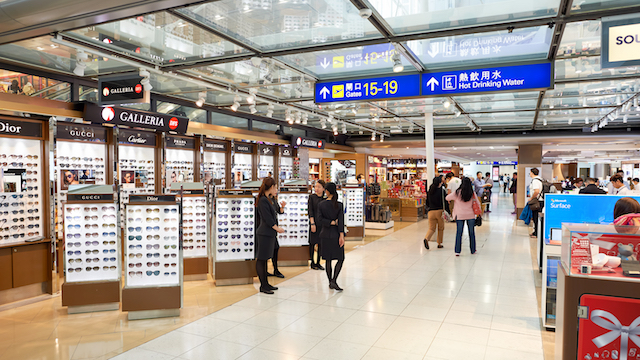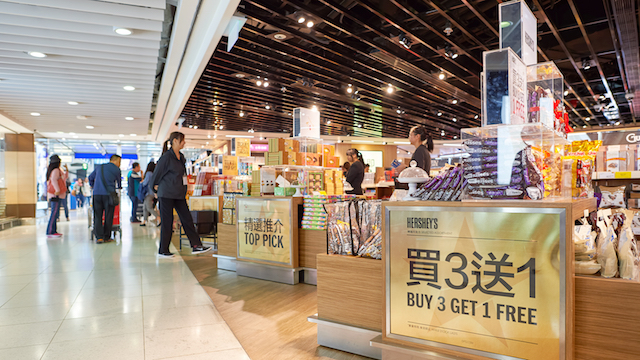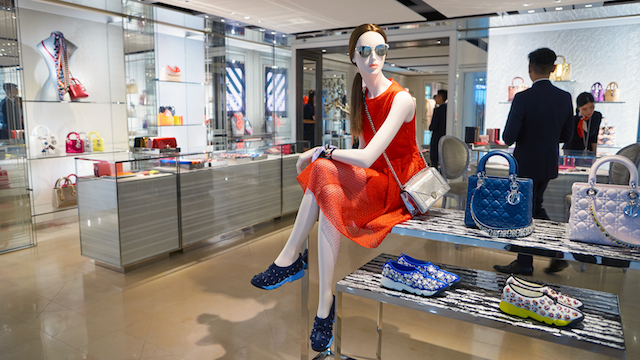Recent research on the Asian travel retail industry clearly shows a sector underperforming.
Recent research on Asia-Pacific’s travel retail industry clearly shows a sector underperforming. While the overall scores reflect a pass mark, new insights into the ways Asian travellers shop, what they miss and – most tellingly – the luke-warm assessment of value suggest huge room for improvement in an industry which should be humming right now given burgeoning passenger volumes across the region.
Dr Peter Mohn – co-owner and CEO of Switzerland-headquartered M1nd-set, made two presentations to a recent seminar organised by the Asia Pacific Travel Retail Association in Hong Kong and hosted by KPMG. In one he looked at shopper buying habits, highlighting touch-points; in another he presented aggregated rankings of customer satisfaction in airport retail.
While the overall perception of airport shops in Asia is 3.6 out of five, things could be far better in travel retail. That’s equivalent to a percentage score of 72.
Positives are availability of luxury products, products suitable for gifting and the overall store atmosphere. But consumers are disappointed with the lack of technology on offer and the local identity of airport retailing – there is too little “sense of place or uniqueness of products”.
The overall value perception is a more modest 2.9 out of five – that’s just a 58 per cent score. Beauty and alcohol are the most positively perceived for value, but fashion and electricity scored the lowest ratings.
Mohn’s research showed that 26 per cent of non-shoppers in Asia-Pacific would be more motivated to shop if airport stores would have a stronger local identity. “Sense of place is the fourth most important aspect influencing the satisfaction with airport shopping,” he said.
Mohn advocates seeking authenticity and making sure local products are available – not cheap, standard souvenirs.
How shoppers behave
The other research looked at how people behave at airports and how they behave in shops.
The fastest-growing influence is, unsurprisingly, social media. Researchers asked shoppers when they buy a product in a specific category, which touchpoints do you go through prior to purchase?
- 17 per cent sought references for friends or were influenced by posts on social media. “We think that might be 25 per cent in a year from now,” ventured Mohn.
- 39 per cent when booking their trip.
- 32 per cent on the way to the airport – by billboards, advertising on public transport (trains, taxis shuttle bus), smartphones, radio broadcasts and in-taxi advertising.
- 41 per cent were influenced at the airport.
- 51 per cent in a duty-free shop.
- 21 per cent on the plane (by advertising on entertainment systems or in-flight magazines).
- 16 per cent at their destination before they come back home.
One of the greatest trends is what Mohn calls “webrooming”. Consumers are researching online before buying offline at airport duty-free stores. And in the context of travel retail, they are doing this more often than they are showrooming (which is looking in stores before buying online).
Decision time
One of the key hehaviour characteristics of travellers shopping at airports is that more than half of them have usually made their purchasing decision before they get into the shop. One in five decide at home before leaving for the airport and another 11 per cent decide at their destination before leaving on their return trip.
Just 2 per cent decide on their way to the airport, and 17 per cent when actually at the airport. Of those, 42 per cent decide after looking around the store and 6 per cent after talking to a sales assistant.
That said, when people are travelling they are more open to trying a new brand, especially when killing time at an airport after check-in.
Why do shoppers like to shop at airport rather than downtown? Three in four say it makes good use of idle time and 59 per cent say it’s perfect for last minute purchases. Four per cent cite convenience and 40 per cent because of appealing prices – which is an interesting statistic when related to the overall disenchantment of value at airport retail.
Digital disconnection
Another take-out from Mohn’s research and observations is the disconnection between retailers and brands and travellers, especially significant when one considers people in airports, post-security and immigration control, are a captive audience and increasingly frequently delayed and looking for engagement or entertainment.
Travellers are airports are almost all using smartphones (85 per cent both before and after security), yet retailers don’t seem to be integrating online and mobile channels with their physical stores to engage shoppers or offer multiple purchasing and delivery options.
“Sixty-two per cent of Asia Pacific Airport shoppers under 40 years old say integrating store, online and mobile shopping experiences are the areas where retailers need the most improvement,” concluded Mohn.
A surprising 71 per cent of travellers from China would be interested in receiving offers or coupons on their smartphones while at airports.
In conclusion: There is a captive audience, open to brand introduction, good deals and engagement. And that audience is growing rapidly throughout Asia.
Travel retailers could be doing better!
Peter Mohn’s travel retail road map
Six key recommendations for online retailers targeting international travellers…
- AR. Use augmented reality to provide new and innovative ways to connect with consumers. Make travel and shopping easy for travellers shopping and add value, ideally with a local touch or sense of place blended in. Provide real-time offers based on travel and local context.
- Social media. As the world moves from an audience to a networked culture, people are now co-owners of brands both online and offline. Social media is an opportunity to enhance relationships and connect with customers by creating an interactive dialogue. It will be fundamental to have a social media strategy in travel retail.
- Smart alliances. As new opportunities arise and travellers expect a ‘seamless journey’, strong partnerships and strategic alliances – ideally with airports – could make a decisive positive difference.
- Differentiate. Distinguish from domestic channels with unique products relating to travel, destination, region, event, exclusives and unique occasions.
- Experience. We should stop telling shoppers we are amazing – instead spend more time offering rich and relevant experiences – in all of their travel-related micro-moments – that inspire people to tell each other how amazing we are.
- Talk with shoppers. Let’s move to talking with airport shoppers instead of to them, taking the channel to the next level and grow stronger than the threatening online and domestic competition.
* This feature originally appeared in Inside Retail Hong Kong magazine print edition. Visit our online store to order your own digital or print subscription to the quarterly magazine.









